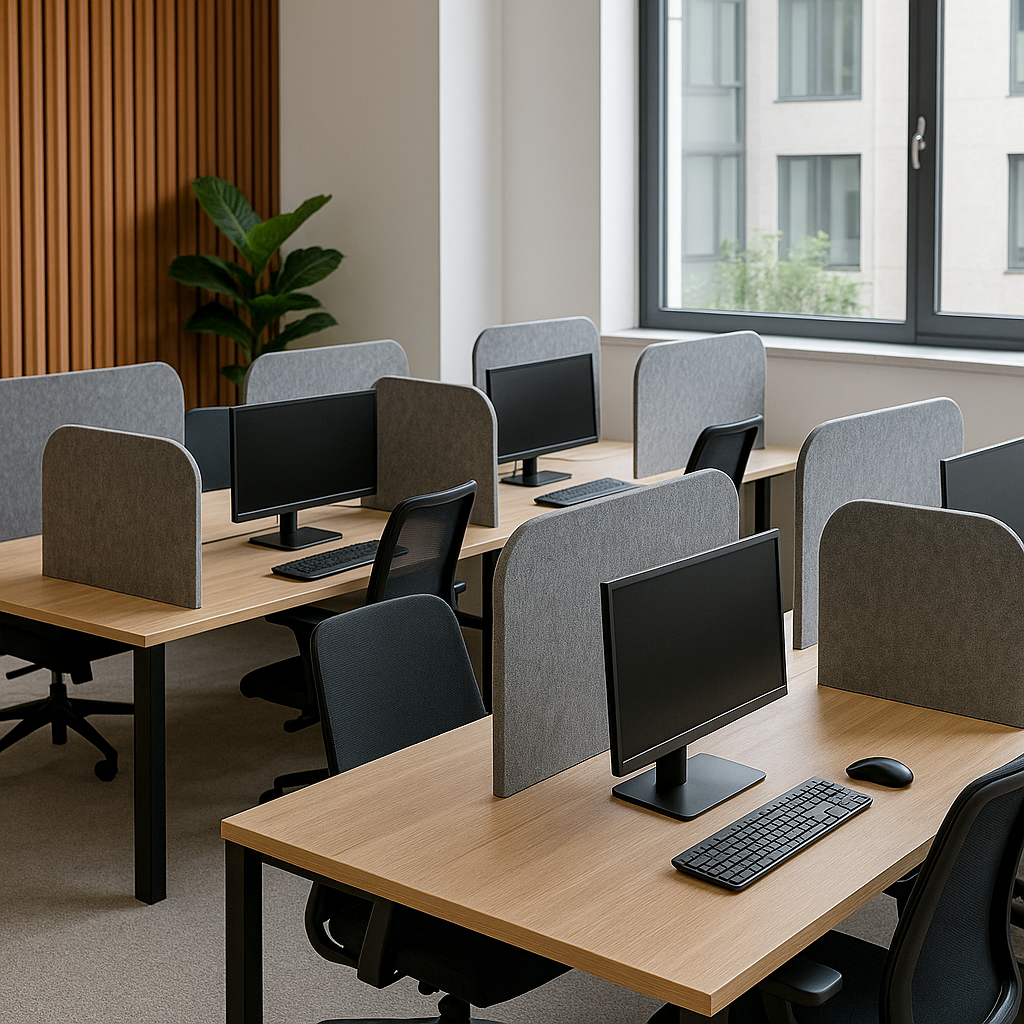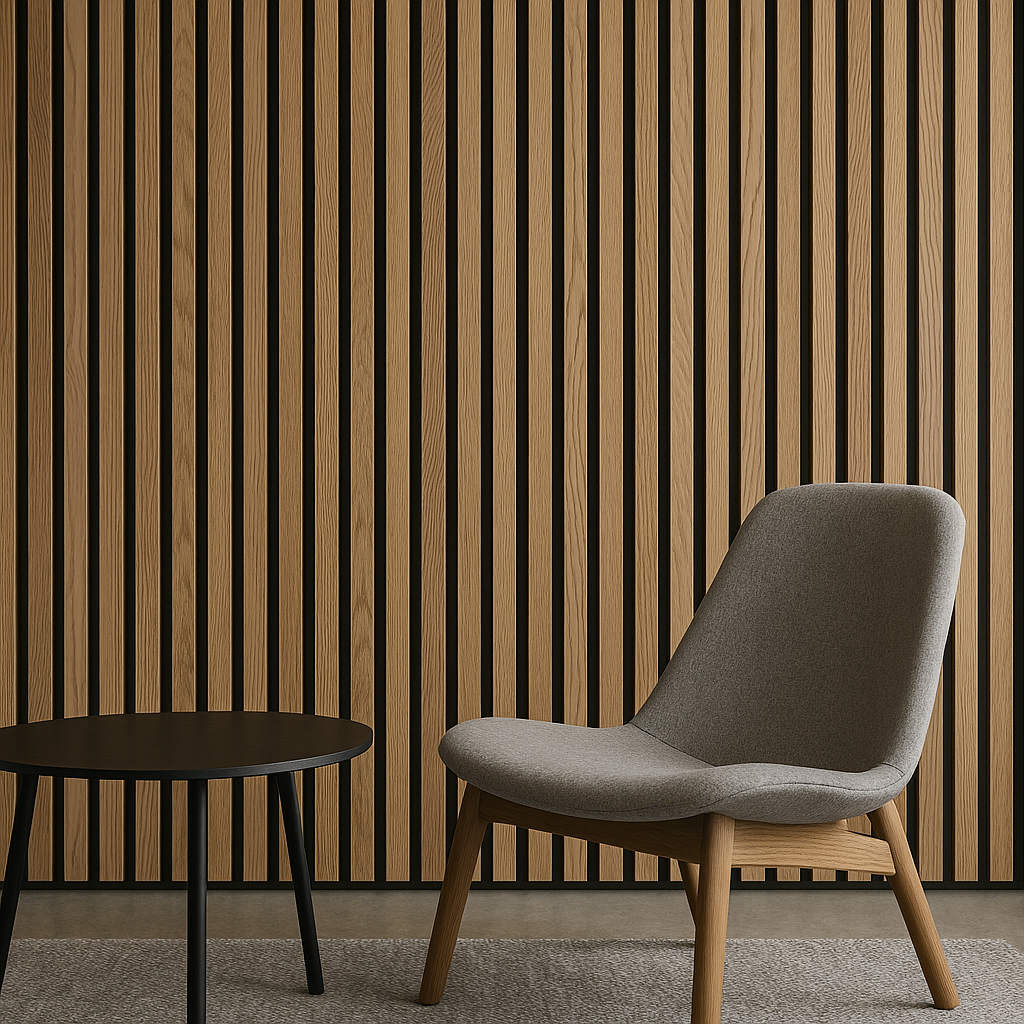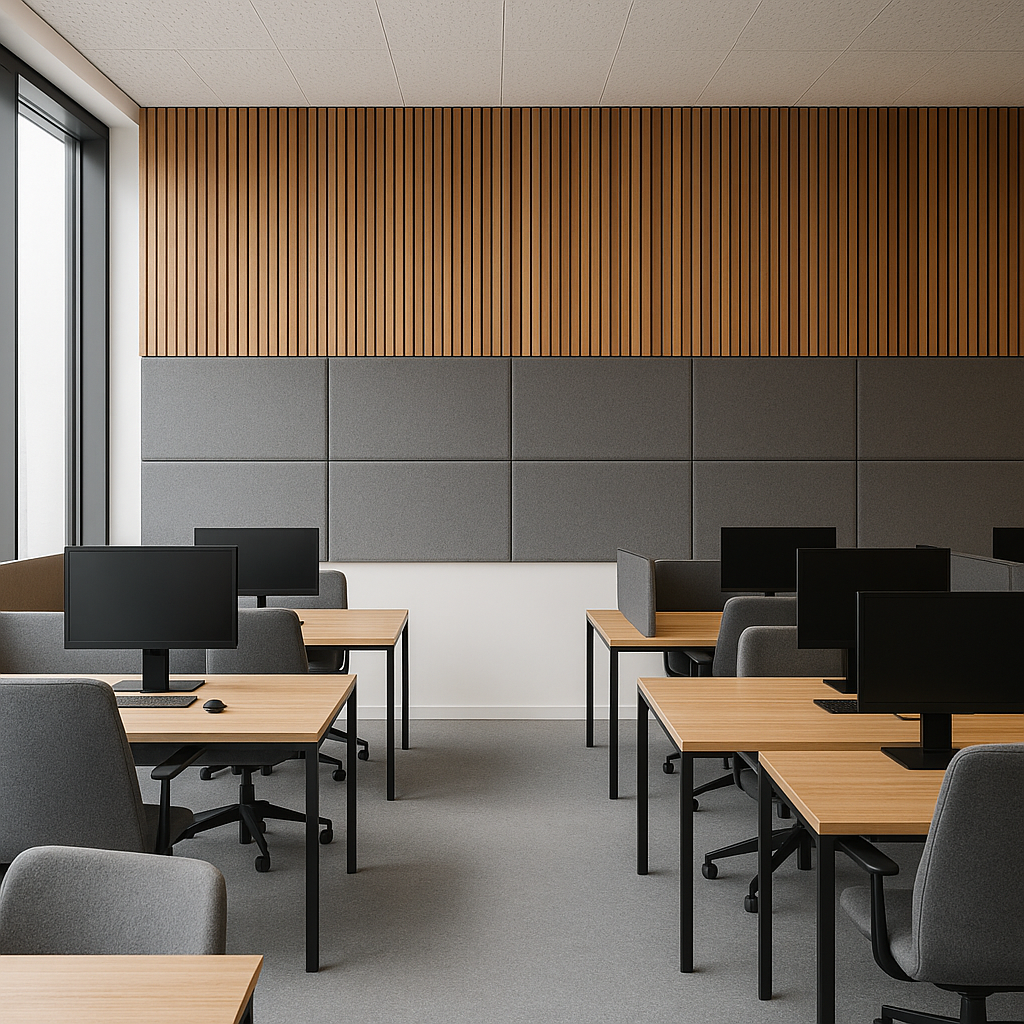Fabric panels are often the first choice for those prioritizing ease of installation, affordability, and a wide range of design options. When it comes to soundproofing and enhancing the aesthetics of a space, acoustic wall panels are an increasingly popular solution. Two of the most widely used options are wooden acoustic panels and fabric-wrapped acoustic panels. Both types are designed to reduce echo and improve sound quality, but they differ significantly in appearance, performance, and ideal applications.
In this guide, we’ll compare wooden and fabric acoustic panels in detail to help you decide which is best for your space—whether it’s a modern office, home theater, recording studio, or residential living room.
What Are Acoustic Wall Panels?
Acoustic wall panels are engineered to absorb sound waves, minimize echo, and improve the acoustics of a room. By controlling how sound bounces off hard surfaces, these panels create a more comfortable auditory environment.
Acoustic panels are typically rated by their Noise Reduction Coefficient (NRC), which ranges from 0.0 (no absorption) to 1.0 (total absorption). Both wooden and fabric panels offer excellent acoustic performance when properly installed, but their differences in design and material composition make them better suited for different settings.
Wooden Acoustic Wall Panels: Overview
Wooden acoustic wall panels combine natural wood finishes with sound-absorbing materials, typically felt or foam. They are crafted to provide both sound diffusion and sound absorption while adding warmth and texture to a room.
Key Features:
- Decorative wood slat design
- Backed with acoustic felt (often made from recycled PET)
- Available in various wood finishes: oak, walnut, birch, etc.
- Moderate to high NRC ratings (0.6 – 0.9 depending on construction)
Pros:
- Elegant aesthetic appeal: Natural wood grain adds sophistication
- Durability: Long-lasting and robust
- Dual function: Offers both absorption and diffusion
- Sustainable options: Many are made with recycled or FSC-certified wood
Cons:
- Higher cost: Often more expensive than fabric panels
- Heavier weight: Requires secure mounting
- Limited color customization compared to fabric options
Fabric Acoustic Wall Panels: Overview
Fabric-wrapped acoustic panels typically feature a wooden or metal frame filled with sound-absorbing material (such as fiberglass or foam) and covered with acoustically transparent fabric. These are some of the most common acoustic panels used in offices, schools, and studios. Their lightweight design makes them easy to install on virtually any wall surface. The wide range of fabric options allows for seamless integration with a room’s décor or branding. Additionally, their high NRC ratings make them particularly effective in environments where speech clarity and noise control are critical.
Key Features:
- Wide variety of fabric colors and textures
- Framed structure for mounting on walls or ceilings
- High NRC ratings (0.7 – 1.0)
Pros:
- High sound absorption: Ideal for controlling echo and noise
- Customizable appearance: Wide range of colors and finishes
- Lightweight: Easy to install
- Affordable: Typically more budget-friendly
Cons:
- Less visually distinctive than wood panels
- Potential for wear or staining over time
- Not as rigid: Can be more fragile during handling
Performance Comparison: Wooden vs. Fabric Panels
| Feature | Wooden Panels | Fabric Panels |
|---|---|---|
| Acoustic Performance | Absorption & diffusion (0.6–0.9 NRC) | High absorption (0.7–1.0 NRC) |
| Aesthetic Options | Natural wood tones, modern slat design | Custom fabric colors and prints |
| Cost | $$$ (Higher) | $$ (Moderate) |
| Durability | Long-lasting, rigid | Moderate, fabric can wear |
| Maintenance | Easy to dust, durable | Requires gentle cleaning |
| Installation | Requires secure mounting | Lightweight, easy install |
| Applications | Living rooms, lobbies, high-design offices | Classrooms, studios, open-plan offices |
Which Is Better for Different Environments?
Office Spaces
- Recommended: Fabric panels for their versatility, affordability, and noise absorption in open-plan offices. They reduce distractions and help create a more productive environment. Their color options also make them easy to coordinate with brand or office design.
- Alternative: Use wooden panels in executive offices, boardrooms, or reception areas where design is prioritized. The visual impact of wood can elevate a space and leave a lasting impression on clients or visitors.
Home Theaters
- Recommended: Fabric panels provide maximum sound absorption for audio clarity. They help control echo and reflections, making dialogue and effects crisper and more immersive. Fabric panels can also be strategically placed to target specific frequencies.
- Supplemental: Combine with wooden panels to diffuse sound and enhance aesthetics. This pairing can balance both technical performance and a warm, luxurious look.
Residential Interiors
- Recommended: Wooden acoustic panels offer both style and function, blending with interior decor. Their natural finishes complement wood floors, trim, and furniture, contributing to a cohesive design. They also subtly reduce ambient noise in shared living areas.
- Use Case: Great for living rooms, hallways, or bedrooms where noise control is subtle but stylish. Homeowners often choose them for their longevity and low maintenance needs.
Recording Studios & Music Rooms
- Recommended: Fabric-wrapped panels due to their superior sound dampening and NRC ratings. They allow for precise acoustic control, making them essential for vocal booths, mixing rooms, and critical listening environments. Their soft materials absorb a wide range of frequencies.
- Optional: Wooden panels can be used on the rear wall for balanced acoustics and design. They offer diffusion to maintain a natural room feel while adding visual texture.
Restaurants & Hospitality
- Recommended: Combination of both. Fabric panels control sound levels, while wooden panels add texture and ambiance. Together, they help create a comfortable acoustic environment that encourages conversation without raising voices. The aesthetic impact of wood also complements hospitality spaces seeking a high-end or cozy atmosphere.
Style & Design Considerations
Wooden Panels:
- Best for biophilic or natural design themes
- Often used in Scandinavian, modern, or rustic interiors
- Available in slat, grid, or geometric designs
Fabric Panels:
- Excellent for brand customization (match brand colors)
- Blend easily into existing walls or ceilings
- Suitable for minimalist or industrial interiors
Installation & Maintenance
Installation
- Wooden panels: Use Z-clips, screw mounts, or adhesive backing for secure placement.
- Fabric panels: Easy to install with impalers, cleats, or even Velcro strips.
Maintenance
- Wooden panels: Wipe with a dry cloth; resistant to stains
- Fabric panels: Vacuum or spot-clean with mild soap and water; more susceptible to stains
Sustainability and Eco-Friendliness
- Wooden Panels: Often made from FSC-certified wood and recycled PET backing. Long lifecycle.
- Fabric Panels: Many use eco-friendly insulation materials and recyclable frames.
- Pro Tip: Always check manufacturer details on material sourcing and certifications.
Final Verdict: Which Panel Is Right for You?
Choosing between wooden acoustic wall panels and fabric-wrapped panels depends on your priorities:
- Choose wooden panels if:
- Design and aesthetics are a top concern
- You want a dual-function panel (absorption + diffusion)
- The space is high-traffic or design-driven (e.g., lobbies, lounges)
- Choose fabric panels if:
- Sound absorption is the primary goal
- Budget is a key factor
- You need flexibility in colors and shapes
Conclusion
Both wooden and fabric acoustic wall panels offer excellent sound control and can dramatically enhance a room’s atmosphere. The right choice comes down to your specific space, design goals, and acoustic needs.
Whether you’re seeking a bold architectural feature or a subtle noise-reducing solution, understanding the strengths of each panel type will guide you to the best decision.
Explore a wide range of acoustic panels today at Imagine Acoustics and find the perfect match for your design and performance needs.




